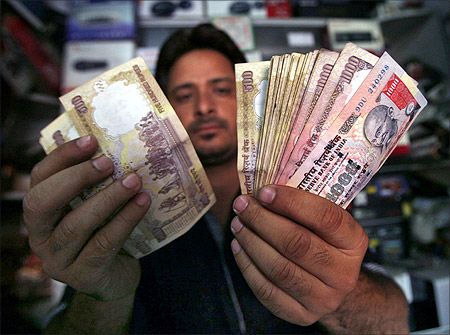 The first auction of the new inflation-indexed bonds (IIBs) went off well. The discovered yield, or coupon rate, was 1.44 per cent. Before discussing the specifics, a background on indexing to inflation might be useful. The idea is to adjust the value of a sum to reflect changes in purchasing power.
The first auction of the new inflation-indexed bonds (IIBs) went off well. The discovered yield, or coupon rate, was 1.44 per cent. Before discussing the specifics, a background on indexing to inflation might be useful. The idea is to adjust the value of a sum to reflect changes in purchasing power.
It's not a new concept in India. Inflation indexing is used to calculate Dearness Allowance, for example. The income tax department indexes long-term capital gains to inflation. Banks do a version when they charge floating rates.
This is the first instrument to offer explicit inflation protection. It has been created out of desperation. High inflation in the past three years has driven investors away from debt and into gold instead, thus widening the current account deficit.
The consequences of indexing can sometimes be bad. But India needn't worry about these potential negatives. There will be a tiny quanta of inflation-indexed paper relative to GDP and government borrowing - the first tranche was just Rs 1,000 crore.
Just for the record, over-indexing could reduce the availability of funds at negative real interest rates at the bottom of an economic cycle. This can affect an economy's ability to rebound. Indexing can also fuel inflation.
In Latin American nations like Brazil and Argentina, indexed deposit rates in the 1980s helped create excess liquidity that fuelled a vicious cycle where inflation zoomed over 100 per cent a week. The specific details of the IIB leave one feeling disappointed. The indexing is to the final Wholesale Price Index, which is released with a six-month lag. The Consumer Price Index (CPI) has consistently ruled higher by 4.5-5 per cent. So, the return will be negative with respect to CPI. The six-month lag is also cause for some worry, since inflation levels can change suddenly.
The structure is similar to US "linkers" as inflation-linked bonds are called. Here's how IIBs will work. Interest will be paid twice a year over the 10-year tenure. The principal will be indexed to the final WPI rate, which is released with a lag. The coupon rate is constant.
The first issue was at a WPI level of 170 and a coupon rate of 1.44 per cent. A year later, say the WPI is 189 (a random number chosen in honour of Viv Richards). The principal will be revised to Rs 1,000 crore x (189/170), or about Rs 1,111 crore. The interest will be 1.44 per cent of Rs 1,111 crore, or about Rs 16 crore. If the WPI goes negative, the principal would be revised down. In practice, this recalculation will be done and interest paid, every six months.
Compare the structure to a simple floater, where the principal remains constant and the interest rate changes with inflation. There is an extra term in the IIB. If P=principal, W= the WPI change in decimals, and C is the decimal coupon rate, the IIB offers a total return in every period of (P PW)x(1 C). This works out to P PW PC PWC. A simple floater would instead offer a return per period of P x {1 (W C)}, which works out to P PW PC.
The IIB's extra term, PWC, is the change in the indexed principal, multiplied by the coupon rate. This is positive if W is positive - that is, if there is inflation. With positive inflation, the IIB offers better returns than a floater with the same coupon rates. If there's deflation and W is negative, the IIB structure will lead to lower returns. Deflation is rare in India but it could happen in exceptional circumstances. The 2008 subprime crisis, for example, led to a drastic, sudden drop in inflation and a couple of months of WPI deflation.
Every IIB auction will also give some idea of inflation expectations. The IIB coupon can be directly compared to the non-indexed 10-year government security yield. The difference should represent inflation expectations. Ideally, the IIB will develop a liquid secondary market, which offers chances of capital gains for traders. But this is unlikely -India doesn't have a liquid secondary bond market.
As it stands, the instrument is difficult to buy for retail investors, like every other government security. It should have been linked to the CPI. However debt returns in India are always negative for retail investors, unless they're willing to take huge risks. The IIB is totally safe.
So it might be worth a punt if you're willing to take the time and trouble and want 10 year debt exposure. It remains to be seen if there will be debt funds with significant exposure to the IIB. It also remains to be seen how it will affect their portfolio.
RETURNS FROM IIB
P= Principal
W= WPI change in decimals
C=Coupon rate in decimals
Returns from IIB (every period) = P PW PC PWC
A simple floater would give: P PW PC












 © 2025
© 2025